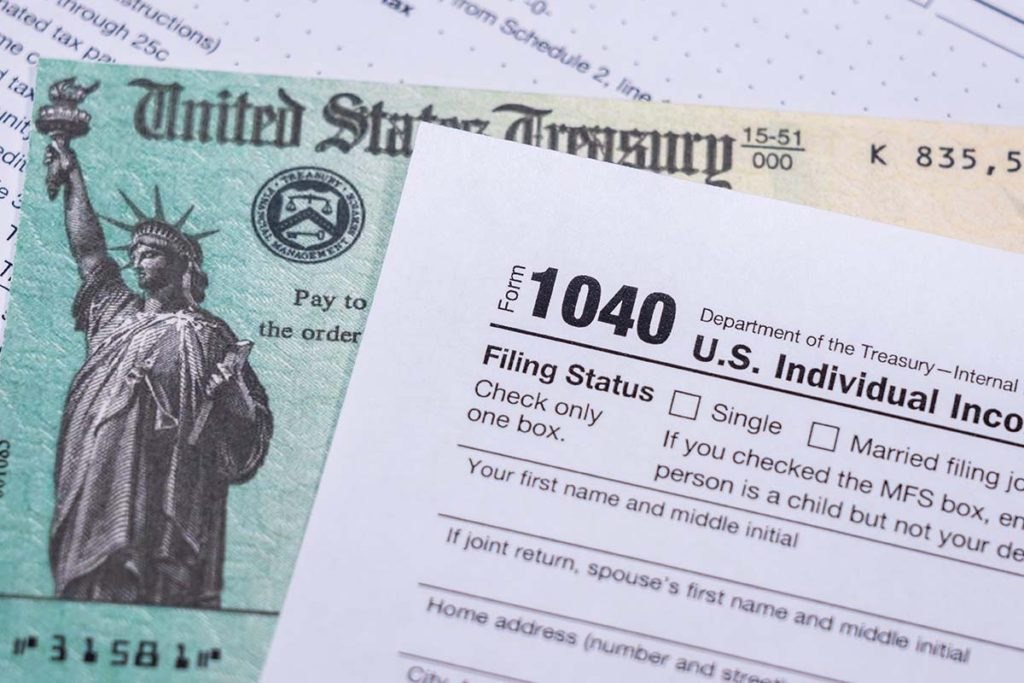W2/Self-employed
We built a tool to help you get the federal FFCRA tax credits that you deserve – safely, quickly, and easily.


What Is The FFCRA Tax Credit —Families First Coronavirus Response Act?
In March 2020, the Families First Coronavirus Response Act (FFCRA) was signed into law to help companies offer paid sick leave and unemployment benefits caused by
COVID-19. Initially the FFCRA focused on employers with W-2 employees to help them weather the economic impact caused by the pandemic.
In December 2020 Congress passed the Coronavirus Aid, Relief, and Economic Security (CARES) Act which expanded the FFCRA to cover not only employers, but the self-employed.
Thanks to the FFCRA expansion self-employed individuals, freelancers, independent contractors, and gig workers are now eligible for tax credits that pay you back for the time
you would’ve normally spent earning money that was lost because of COVID.
Eligibility
Did you miss work due to:
-
Federal, state, or local lockdown orders related to COVID-19
-
Quarantining or isolation order related to COVID-19
-
Caring for your child whose school had closed or gone virtual
-
Caring for your child because your child care provider was unavailable due to COVID-19
-
Symptoms of COVID-19 or seeking a medical diagnosis
-
Sickness due to vaccination side effects
-
Caring for someone with COVID symptoms
-
A COVID-19 vaccination appointment
-
Side effects due to vaccination
Filing, Easier than ever.
Filing with the IRS can be challenging, complex, and time-consuming. No need to ask – Do I have the right paperwork? Are these calculations correct? How do I know if I’m approved?
It’s why we created Chile Taxes LLC because working for yourself doesn’t mean you’re alone.
We’ll take care of amending your tax returns and submitting your application to the IRS, so you can get back to doing what matters most: growing your business.

See if you qualify in 10 easy questions!
Frequently Asked Questions
The Families First Coronavirus Response Act (FFCRA) was passed in 2020 and was one of the earliest pieces of legislation designed to help small business owners afford the sick leave their employees had to take because of COVID-19.
The FFCRA originally focused only on employees of certain small businesses but had been expanded in 2021 to cover US citizens who were self-employed during the COVID-19 pandemic and suffered losses in business due to lockdowns or illnesses for themselves or family members.
The dates you can claim under FFCRA income tax credit are between April 1, 2020 – March 31, 2021 and up to 10 days for dates between April 1, 2021 – September 30, 2021.
Here is a breakdown of the days:
Childcare related time off – up to 110 days
- 50 days between April 1,2020 and March 31, 2021
- 60 days between April 1, 2021 and September 30, 2021
Yourself or loved one (other than child) – up to 20 days
- 10 days between April 1,2020 and March 31, 2021
- 10 days between April 1, 2021 and September 30, 2021
To qualify for FFCRA credits you must have missed work because of COVID-related issues. If you were unable to work because of one of these reasons, you may be eligible:
- A government agency imposed a quarantine or isolation order.
- Your doctor recommended you self-quarantine.
- You were having COVID-19 symptoms while also waiting for an appointment with your doctor.
- You were waiting for COVID-19-related test results.
- You were getting vaccinated against COVID-19
- You were experiencing side effects from the COVID-19 vaccine.
- You took care of your children who were affected by school or daycare shutdowns.
- You took care of someone else/family members who had COVID-19 issues.
Self-employed individuals are eligible for FFCRA credit if they are out of work (or telework) due to government quarantine orders, self-quarantine, COVID-19 symptoms and seeking medical diagnosis. The credit is calculated by multiplying the number of days on leave and taking whichever amount is smaller:
- Your average daily self-employment income of year or:
- $511.
If you are unable to work (or telework) to take care of a family member who is under quarantine or to take care of a child whose child care is unavailable, you are still eligible for this credit. The credit is calculated by multiplying the number of days on leave and taking whichever amount is smaller:
- ⅔ of your average daily self-employment income or :
- $200.
We will use line 6 of the Schedule SE on your personal tax return to determine your annual pay, that is then divided by 260 (Considered the standard amount of working days in a year) to calculate your daily rate.
From there, we must determine which reason the leave was taken and that will decide what rate can be paid for the dates being claimed. For self leave, we claim your full daily rate up to $511/day. Family or childcare leave is calculated as 2/3rds of your pay up to $200/day.
It can take up to three weeks for the IRS to acknowledge the acceptance of your FFCRA credit application and up to 20 weeks from that acceptance to receive your refund via check or direct deposit.
The total FFCRA Tax credit can be up to $100,000.00 and is based on your net earnings in 2020 and in 2021.
You will have to calculate your daily average of self-employment income. This is your net earnings for the taxable year divided by 260 (the standard recognized amount of working days in a year). This allows the IRS to estimate how much you lost in wages for every day you were not able to work.
A self-employed person in the United States, as defined by the Internal Revenue Service (IRS), is generally considered someone to who the following applies:
- You carry on a trade or business as a sole proprietor or an independent contractor.
- You are a member of a partnership that carries on a trade or business.
- You are otherwise in business for yourself (including a part-time business or a gig worker).
The IRS defines a dependent as either a qualifying child or relative of the taxpayer. The relative can be your child, stepchild, foster child, sibling, parent, grandparent, grandchild, aunt, uncle, niece, nephew, or certain in-law relationships.
The Child Tax Credit helps families with qualifying children get a tax break. To have received a Child Tax credit or a credit for other dependents, you would have had to submit a Schedule 8821.
A child must have lived with you for more than half of the tax year. Temporary absences, such as for education or medical care, are generally counted as periods of living with you. You must have provided more than half of the relative’s total support during the tax year. The relative’s gross income must be below a certain threshold determined annually by the IRS (subject to change). It’s important to note that these are just general guidelines, and there may be additional rules and exceptions. The IRS provides detailed information in publications such as IRS Publication 501.
Examples of a Dependent:
- Child
- Parent
- Brother/Sister
- Stepparent/Stepchild
- Adoptive Daughter/Adoptive Son
- Stepbrother/Stepsister
- Half Brother/Half Sister
- Grandparent/Grandchild
- Son-in-law/Daughter-in-law
- Mother-in-law/Father-in-law
- Brother-in-law/Sister-in-law
- Uncle/Aunt
- Niece/Nephew
If your standard work day includes a weekend day, or your child was in school or daycare during a weekend, then you may include them.
If you normally don’t work on weekends or your child does not go to school on weekends, you cannot claim credits for weekends that they would not have worked or taken leave anyway. The credits are only available for the days that you would have worked or taken leave if not for the COVID-19-related reasons.
Yes! This is what the FFCRA was designed to cover, especially since a lot of entrepreneurs fall into this category.
No. you can only use days you took care of your dependent.
Yes. If the physical location where your child received instruction or care is now closed, the school or place of care is “closed” for purposes of paid sick leave and expanded family and medical leave. This is true even if your child is still expected or required to complete assignments.
Refunds for 2020 and 2021 will be sent to you directly by the IRS via check to the address provided on your FFCRA application.
Yes!! We can help you even though you are a W2 employee! You may be eligible for the FFCRA credit, please apply above.
The Child Tax Credit helps families with qualifying children get a tax break. To have received a Child Tax credit or a credit for other dependents, you would have had to submit a Schedule 8821.
We understand Covid-19 pandemic effected everyone globally. If you did not have positing earnings in 2020 because of Covid-19 restrictions, we can use your 2019 net income.
Yes, but parents can not claim the same dates twice.
FFCRA is a tax credit not a loan. It is also not considered a grant as it’s a refund of taxes you’ve already paid.

Our hours
9:00 AM – 5:00 PM
Monday – Friday
Contact us
Email: rebates@chiletaxes.com
Phone: (424) 334-0015